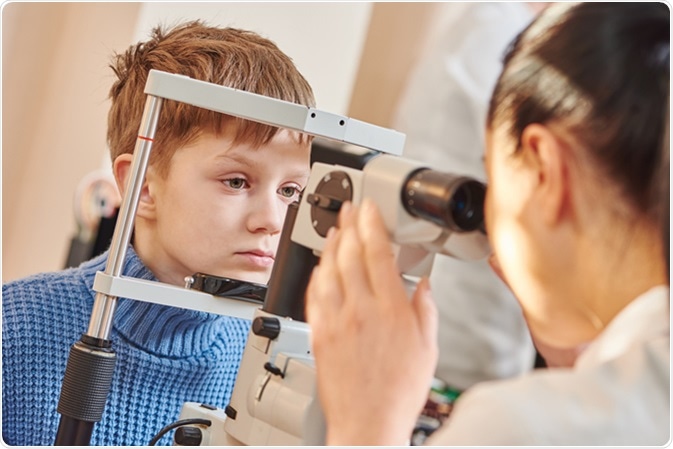Professional Optometrist in Andalusia: Your Vision Is Worthy Of the very best
Professional Optometrist in Andalusia: Your Vision Is Worthy Of the very best
Blog Article
The Advantages And Disadvantages of Various Refractive Surgical Procedures for Boosted Eyecare

LASIK Surgical Treatment
LASIK surgical treatment is a generally carried out refractive procedure that aims to remedy vision concerns such as farsightedness, astigmatism, and nearsightedness. Throughout the procedure, a thin flap is produced on the cornea, and a laser is made use of to reshape the underlying cells, dealing with the refractive mistake.
Among the main advantages of LASIK surgical treatment is the fast improvement in vision experienced by several patients. The majority of people observe a significant improvement in their eyesight shortly after the treatment, with minimal downtime required for recovery. Additionally, LASIK is known for its high success rate and reduced occurrence of difficulties when done by knowledgeable specialists. Like any type of surgical procedure, LASIK additionally lugs some risks, consisting of completely dry eyes, glow, halos, and under or overcorrection of vision. It is crucial for individuals thinking about LASIK surgery to undertake a thorough analysis by an eye care specialist to figure out if they are appropriate candidates for the procedure.
PRK Treatment
The PRK treatment, likewise known as Photorefractive Keratectomy, is a kind of refractive surgery that intends to fix vision issues similar to LASIK surgical treatment. Unlike LASIK, which involves developing a flap in the cornea, PRK deals with the surface area layer of the cornea. During the PRK treatment, the outer layer of the cornea, called the epithelium, is removed to enable improving of the underlying corneal tissue with an excimer laser. This improving assists to deal with refractive mistakes such as astigmatism, farsightedness, and nearsightedness.
Among the benefits of PRK over LASIK is that it removes the risk of flap-related complications considering that no flap is developed throughout the surgical procedure. This can be helpful for people with slim corneas or those associated with call sports where eye injury is an opportunity. The recovery time for PRK is generally longer contrasted to LASIK, as the outer layer of the cornea requires time to regenerate after the treatment. Regardless of the longer healing duration, PRK can be an ideal alternative for people seeking vision improvement surgical treatment.
SMILE Surgery
An innovative refractive surgery method obtaining appeal in the field of ophthalmology is SMILE Surgical procedure. Tiny Laceration Lenticule Removal (SMILE) is a minimally invasive procedure that fixes vision by reshaping the cornea utilizing a femtosecond laser. Unlike standard LASIK surgical procedure, SMILE Surgical procedure entails developing a little incision in the cornea to extract a lenticule, which causes less disruption to the corneal structure and potentially much faster healing times.
Among the key benefits of SMILE Surgical procedure is its ability to treat nearsightedness (nearsightedness) and astigmatism with high accuracy, resulting in outstanding aesthetic results for patients. The minimally invasive nature of the procedure likewise reduces the threat of problems such as dry eye disorder, making it a favorable alternative for people seeking refractive surgical treatment.

LASEK Method
Having discovered the benefits and considerations of SMILE Surgery, one more significant refractive surgical treatment method worth taking a look at is the LASEK Strategy. LASEK, which means Laser-Assisted Subepithelial Keratectomy, is a form of laser eye surgical treatment that aims to remedy refractive errors such as nearsightedness (nearsightedness), hyperopia (farsightedness), and astigmatism.
Unlike LASIK, LASEK does not involve producing a corneal flap. Instead, throughout a LASEK procedure, the specialist makes use of a diluted alcohol remedy to loosen up the slim external layer of the cornea, understood as the epithelium.
Among the main benefits of LASEK is that it can be appropriate for people with slim corneas that might not be excellent candidates for LASIK. Additionally, LASEK usually causes very little post-operative discomfort and a quicker recovery time compared to PRK. The visual recuperation procedure with LASEK may be slightly longer than with LASIK.
Implantable Get In Touch With Lenses
Implantable Contact Lenses offer a long-lasting vision adjustment remedy for people looking home for an alternative to traditional call lenses or glasses. These lenses, also known as phakic intraocular lenses, are operatively put right into the eye to deal with refractive errors such as nearsightedness (nearsightedness), hyperopia (farsightedness), and astigmatism. neurologist Andalusia. Unlike traditional get in touch with lenses that rest on the surface of the eye, implantable get in touch with lenses function within the eye itself, providing clear vision without the demand for everyday upkeep or removal
Among the key advantages of implantable call lenses is their durability. Once placed, they can stay in the eye indefinitely, using steady and regular vision correction. Furthermore, these lenses can be an outstanding alternative for individuals who are not excellent candidates for laser eye surgical treatment or that like a relatively easy to fix vision adjustment treatment.
However, implantable call lenses do bring some go to this web-site threats, including the capacity for cataracts or increased eye pressure. It is critical for individuals considering this alternative to talk to an eye care expert to figure out if implantable contact lenses are the ideal selection for their details needs and eye top article health and wellness.
Final Thought
In conclusion, each kind of refractive surgery has its own benefits and negative aspects. LASIK surgery is popular for its fast healing time, while PRK procedure may be suitable for people with slim corneas.

On The Whole, SMILE Surgical procedure presents an appealing alternative for people looking to enhance their vision with refractive surgery.
Report this page